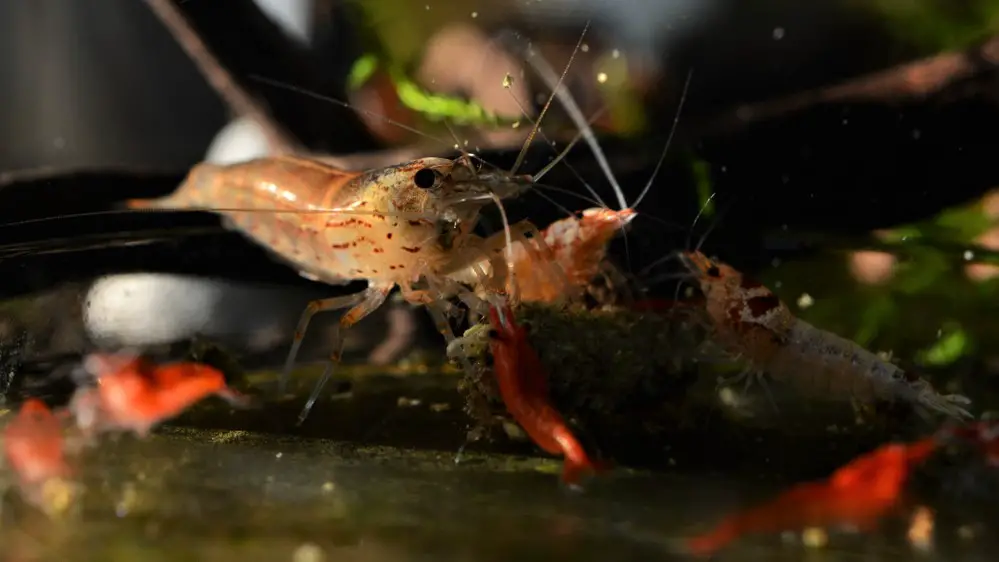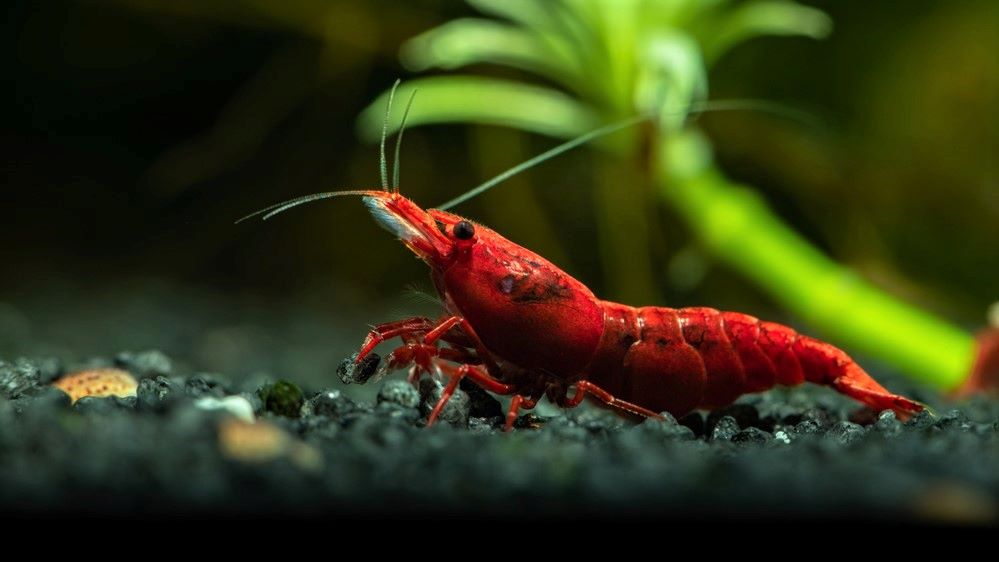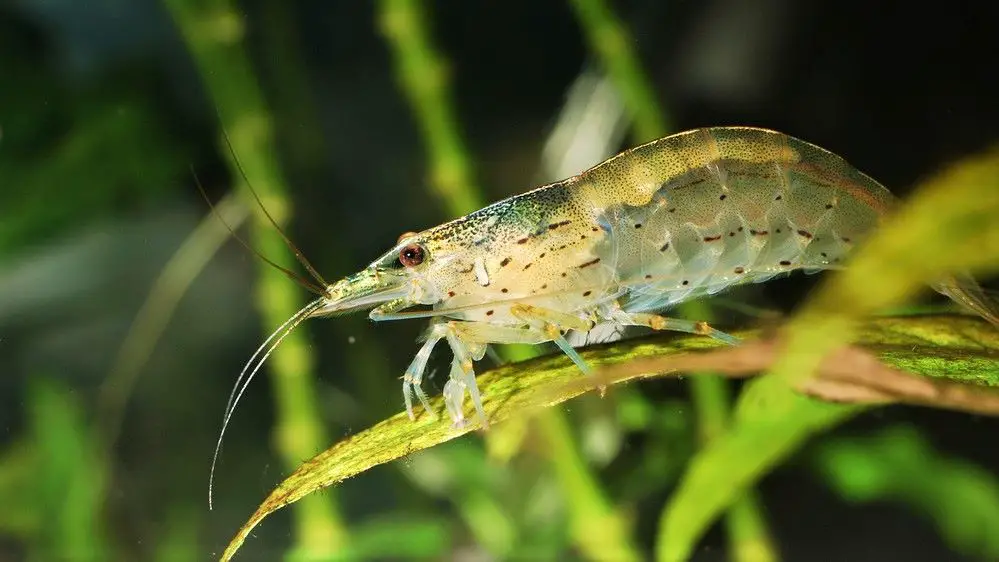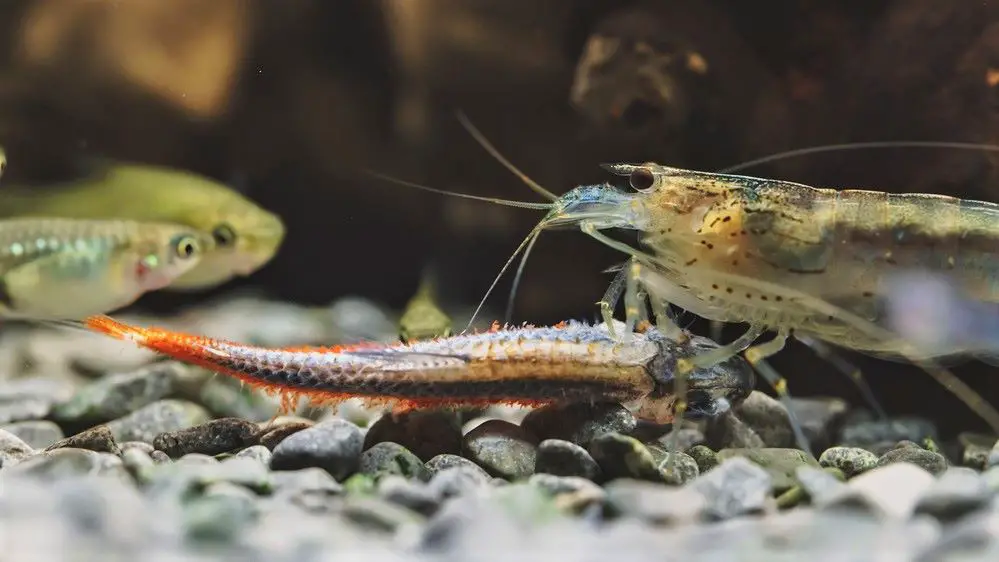Yes, Amano and Cherry Shrimp can indeed coexist in the same tank. The only caveat is that Amano Shrimp are slightly more aggressive during feeding time, so ensuring that there is ample food for both types is essential.
One of my favorite things is observing different species’ behaviors when they share the same environment. In my years of experience, I’ve often wondered if two of my favorite shrimp species, the Amano and Cherry Shrimp, can live together peacefully.
After many observations and research, I’ve found that they can coexist in the same tank. This discovery led me to further explore the dynamics between these two species, and the knowledge I’ve gained has been fascinating. In this article, I’m going to share what I’ve learned about mixing Amano and Cherry Shrimp in an aquarium, and how you can successfully create a harmonious environment for them.
me to further explore the dynamics between these two species, and the knowledge I’ve gained has been fascinating. In this article, I’m going to share what I’ve learned about mixing Amano and Cherry Shrimp in an aquarium, and how you can successfully create a harmonious environment for them.
Amano and Cherry Shrimp: An Overview
When it comes to shrimp species that are popular for home aquariums, Amano and Cherry Shrimp often top the list. Both are renowned for their unique characteristics and behaviors, making them intriguing to watch and relatively easy to care for. However, they each come with their own distinct needs and habits, which are important to understand if you’re considering keeping them together in the same tank.
Amano Shrimp, named after the famous Japanese aquarist Takashi Amano, are larger shrimp that can grow up to 2 inches in length. They are recognized for their translucent bodies with dotted blue-gray lines running along their backs. Amanos are incredibly efficient at algae control, which makes them a valuable addition to any aquarium.
They are hardy creatures that can adapt to a variety of water conditions, but they thrive best in temperatures between 22 to 28 degrees Celsius with a pH level of 6.5 to 8.
On the other hand, Cherry Shrimp, also known as Red Cherry Shrimp, are more petite in size, typically reaching up to an inch in length. They are characterized by their vibrant red color, which can range from a pale pink in younger shrimp to a deep, cherry red in mature adults.
Like the Amanos, Cherry Shrimp are also excellent algae eaters and can survive in a broad range of water conditions. However, they prefer slightly warmer temperatures between 24 to 30 degrees Celsius and a pH level of 6.5 to 8.
Both Amano and Cherry Shrimp are generally peaceful creatures that are not known to exhibit aggressive behavior towards other species. However, Amano Shrimp are a bit more assertive during feeding times, tending to monopolize the food, which is a crucial factor to bear in mind when keeping them with Cherry Shrimp.
Interestingly, while both species can thrive in freshwater, their breeding habits differ significantly. Amano Shrimp require brackish water for their larvae to survive, making their breeding process a bit more complex.
In contrast, Cherry Shrimp breed quite easily in freshwater, often leading to a rapidly growing population in your tank.
While Amano and Cherry Shrimp have their differences, they share enough similarities to live harmoniously in a well-maintained aquarium. Understanding their unique needs and behaviors is key to ensuring a balanced and comfortable environment for both species.

The Feeding Habits of Amano and Cherry Shrimp
Understanding the feeding habits of both Amano and Cherry Shrimp is critical when housing these two species together. Both are scavengers and have a diverse diet that includes algae, decaying plant matter, and various types of commercial shrimp food. However, one must consider some notable differences in their feeding behaviors.
Amano Shrimp are renowned for their voracious appetites. Compared to Cherry Shrimp, their larger size allows them to eat more and faster. They are often seen darting across the tank, hunting for bits of food, and are particularly effective at keeping an aquarium clean by consuming algae and leftover food. During feeding times,
Amanos tend to be quite assertive, often out-competing other tank inhabitants for food. They are not aggressive in the traditional sense; they do not attack or harm other creatures but can monopolize food sources if not carefully managed.
On the other hand, Cherry Shrimp have a more laid-back approach to feeding. They tend to graze slowly on algae and biofilm throughout the day. Unlike Amanos, they are not known to rush towards food aggressively. However, their smaller size and passive nature can put them at a disadvantage during feeding times, particularly in a mixed tank with Amanos.
When feeding Amano and Cherry Shrimp in the same tank, it’s crucial to ensure that ample food is provided to satisfy both species. A good strategy is to distribute the food across different areas of the tank to give the Cherry Shrimp a fair chance to feed without being overshadowed by the Amanos.
It’s also worth noting that both species can adjust their diets depending on what’s available. If algae levels in the tank are low, they will happily consume prepared foods like flakes , pellets, or even blanched vegetables. Keeping an eye on the tank’s algae levels and adjusting their diet accordingly can help maintain a balanced and healthy environment for both Amano and Cherry Shrimp.
, pellets, or even blanched vegetables. Keeping an eye on the tank’s algae levels and adjusting their diet accordingly can help maintain a balanced and healthy environment for both Amano and Cherry Shrimp.

Breeding Challenges with Amano Shrimp
Breeding Amano Shrimp is an interesting yet challenging endeavor that requires a specific set of conditions. Unlike Cherry Shrimp, which breed quite easily in freshwater, Amano Shrimp have a complex lifecycle that involves a marine phase, making their breeding process more intricate.
In their natural habitat, Amano Shrimp reproduce by releasing their larvae into the ocean. The larvae then undergo several developmental stages in the saltwater environment before transitioning back to freshwater as juvenile shrimp. Replicating this lifecycle in a home aquarium presents a unique set of challenges.
Firstly, Amano Shrimp need to be in a comfortable and stress-free environment to breed. This means maintaining optimal water parameters and ensuring the shrimp have plenty of hiding spots to feel safe. Once the female shrimp is carrying eggs, it’s a sign that breeding has occurred. However, the journey from eggs to fully developed shrimp is where the real challenge lies.
Once the eggs hatch, the larvae need to be moved to a separate tank with brackish water – a mixture of fresh and saltwater. This simulates the oceanic conditions that the larvae would naturally experience. The salinity level of this water is critical. Too little salt and the larvae won’t survive; too much could also prove harmful.
During their time in the brackish water, the larvae go through several molts, gradually changing in shape and size. They require very specific nutrition during this stage, usually in the form of marine plankton. Without this diet, their survival rate drastically decreases.
After about a month in brackish water and assuming all conditions have been met, the shrimp will metamorphose into their juvenile stage and can be transitioned back into freshwater. This transition needs to be done gradually to avoid shocking the shrimp.
It’s also worth noting that while some aquarists have reported success with breeding Amano Shrimp in freshwater, these instances are quite rare. The larvae still require the same specific diet to survive, and even then, the survival rate tends to be significantly lower without the brackish water phase.
In conclusion, breeding Amano Shrimp in a home aquarium is a delicate process that requires patience, precision, and a willingness to meet the shrimp’s unique needs. While it may seem daunting, the reward of seeing a new generation of Amano Shrimp flourish can be well worth the effort.

Tips for Creating a Harmonious Tank Environment
Creating a harmonious environment for Amano and Cherry Shrimp in the same tank involves carefully understanding their needs and behaviors. With a little planning and regular maintenance, it’s entirely possible to create a thriving shared habitat for these two fascinating species. Here are some tips to help you achieve this.
1. Ensure Adequate Tank Size: The size of the aquarium plays a significant role in the health of the shrimp. Amano and Cherry Shrimp need ample space to move around, forage, and breed. As a rule of thumb, a 10-gallon tank is a good starting point for a mixed shrimp community. However, the larger the tank, the better it will be for managing water quality and providing enough space for both species.
2. Maintain Optimal Water Parameters: Both species of shrimp thrive in clean water with stable parameters. Regular monitoring of the water temperature, pH, hardness, and ammonia, nitrite, and nitrate levels is crucial. Aim for a pH level between 6.5 to 8 and a temperature range that accommodates both species—around 22 to 28 degrees Celsius.
3. Provide Plenty of Hiding Spots: Shrimp are prey animals in nature and feel safer when they have plenty of hiding spots. Driftwood, rocks, and aquatic plants can provide excellent cover and also contribute to the overall aesthetics of the aquarium.
4. Manage Feeding Well: As discussed earlier, Amano Shrimp are more assertive during feeding times. Ensure that there’s enough food for all inhabitants and consider spreading out the food in different areas of the tank to give the Cherry Shrimp a fair chance to feed.
5. Monitor Aggression: Although Amano and Cherry Shrimp are generally peaceful, it’s essential to keep an eye out for any signs of aggression. If you notice a shrimp being consistently bullied or outcompeted for food, it may be necessary to separate them.

Key Differences between Amano and Cherry Shrimp
While Amano and Cherry Shrimp can cohabit peacefully, they have some distinct differences that are important to understand, particularly if you’re planning to keep them together in a shared aquarium. These differences span across their size, coloration, feeding habits, and breeding requirements.
1. Size and Appearance: Amano Shrimp are typically larger than Cherry Shrimp, growing up to 2 inches in length compared to the Cherry Shrimp’s maximum size of about 1 inch. This size difference can impact their behaviors, particularly during feeding times. In terms of appearance, Amano Shrimp have a translucent body with dotted blue-gray lines running along their backs. On the other hand, Cherry Shrimp are known for their vibrant red color, which can range from a pale pink in younger shrimp to a deep, cherry red in mature adults.
2. Feeding Habits: Both species are algae eaters, but they approach feeding differently. Amano Shrimp tend to be more assertive during feeding times, often consuming food quickly and in large quantities. Conversely, Cherry Shrimp are slower eaters, typically grazing on algae and biofilm throughout the day.
3. Breeding Requirements: Cherry Shrimp breed easily in freshwater and can rapidly increase their population under the right conditions. Amano Shrimp, however, have more complex breeding needs. Their larvae require a brackish water environment to survive, making the breeding process more challenging for the home aquarist.
4. Behavior: Both species are generally peaceful and non-aggressive. However, due to their larger size and assertive feeding habits, Amano Shrimp may appear more dominant in a mixed-species tank.
Understanding these differences can help aquarists create a balanced environment that caters to the needs of both species. It’s important to remember that while these shrimp can live together peacefully, they each require specific care to thrive. By acknowledging their unique characteristics and requirements, you can ensure a healthy and harmonious shrimp community in your aquarium.

A Word of Warning: The Consequences of Underfeeding Amano Shrimp
From my own experience, there’s an important cautionary tale I’d like to share about keeping Amano and Cherry Shrimp together in the same tank. It all revolves around one critical aspect of their care: feeding. Specifically, it’s about what can happen when Amano Shrimp are not fed adequately.
Like any other living creature, Amano Shrimp need a consistent supply of food to stay healthy. They are known for their larger size and hearty appetite compared to Cherry Shrimp. If they are well-fed, Amanos are generally peaceful tankmates who won’t bother other inhabitants. However, if they go hungry, their behavior can change drastically.
I discovered this the hard way when I skipped feeding my Amanos for a few days. To my horror, I found that they had started to prey on the Cherry Shrimp in the tank. It was a shocking sight and a heartbreaking lesson. Amanos, when starved, can turn to other food sources, even if it means resorting to their smaller, peaceful tankmates.
This incident taught me the importance of a consistent feeding schedule when keeping Amanos, especially in a mixed-species tank. It’s not just about keeping them full; it’s about maintaining the peace and harmony among the aquarium’s inhabitants.
Conclusion
Keeping Amano and Cherry Shrimp together in the same tank is possible. While it may present a few challenges, such as ensuring ample food during feeding times and creating the right conditions for Amano breeding, the overall experience can be rewarding. Observing these two different species interact in the same environment provides a unique insight into the fascinating world of shrimp behavior.
Remember if you need help, don’t hesitate to reach out to us here or on our Facebook group .
.
Happy Shrimp Keeping!
FAQ
Q. What shrimp can I keep with Amano Shrimp?
A. You can keep Cherry Shrimp with Amano Shrimp. They make good tank mates and won’t crossbreed or harm one another.
Q. Can you keep different types of shrimp together?
A. Yes, different types of shrimp like Amano and Cherry Shrimp can be kept together. However, it’s important to monitor the temperament of both species.
Q. Can Neocaridina live with Amano?
A. Yes, Neocaridina, which includes Cherry Shrimp, can live with Amano Shrimp. They thrive in the same parameters.
Q. Can Crystal Red shrimp live with Amano Shrimp?
A. While it’s not explicitly stated, it’s likely that Crystal Red Shrimp, similar to Cherry Shrimp, can live with Amano Shrimp given the right conditions.
Q. Will Amano Shrimp eat Cherry Shrimp?
A. Amano Shrimps can eat Cherry Shrimps, but it isn’t their regular food choice. It depends upon various factors, which results in this behavior.
